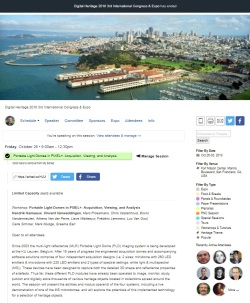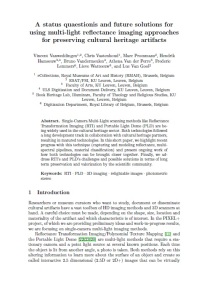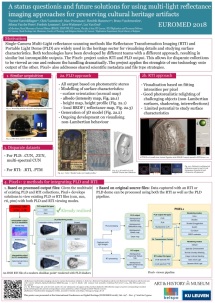Intro
The PIXEL+ project aims to formulate and engineer methods to bring together existing multi-light reflectance (MLR) imaging methods. That is to make it possible image data-sets (processed or not) from one system can benefit from the processing, viewing and analysis strategies applied by others. Secondly, the project develops a browser-based viewer in which a set of MLR types of data-sets can be consulted with a extended number viewing and analytical solutions.
“Pixel+: Universal web interface for Interactive Pixel Based file formats” is funded via Belspo BRAIN-BE Pioneer and coordinated via the Federal Scientific Institution: Royal Museums of Art and History, together with the formal partners Royal Library of Belgium, ESAT (KU Leuven) and Illuminare (KU Leuven), informal KU Leuven Libraries.
First results
During 3 conferences (DH Benelux, DH2018 & EuroMed2018), spread over the last couple of months, the project goals and the first results have been launched.
Left: DH Benelux at Amsterdam conference abstract
Right: DH2018 at San Francisco conference manage session
Left: EuroMed2018 at Nicosia conference paper (Award: Best Short Paper)
Right: EuroMed2018 at Nicosia conference poster
The first major step which has been made comprises the integration of processed RTI data-sets into the PLDviewer environment.
Next steps
- Fine-tuning of the first integration method (processed RTI into PLDviewer).
- Assessing the challenges related to the re-processing of the original source files to allow in depth integration of both the RTI and PLD strategies on each other’s data-sets.
- Launch of a new browser-based viewer in which RTI and PLD data-sets can be consulted and analysed.






